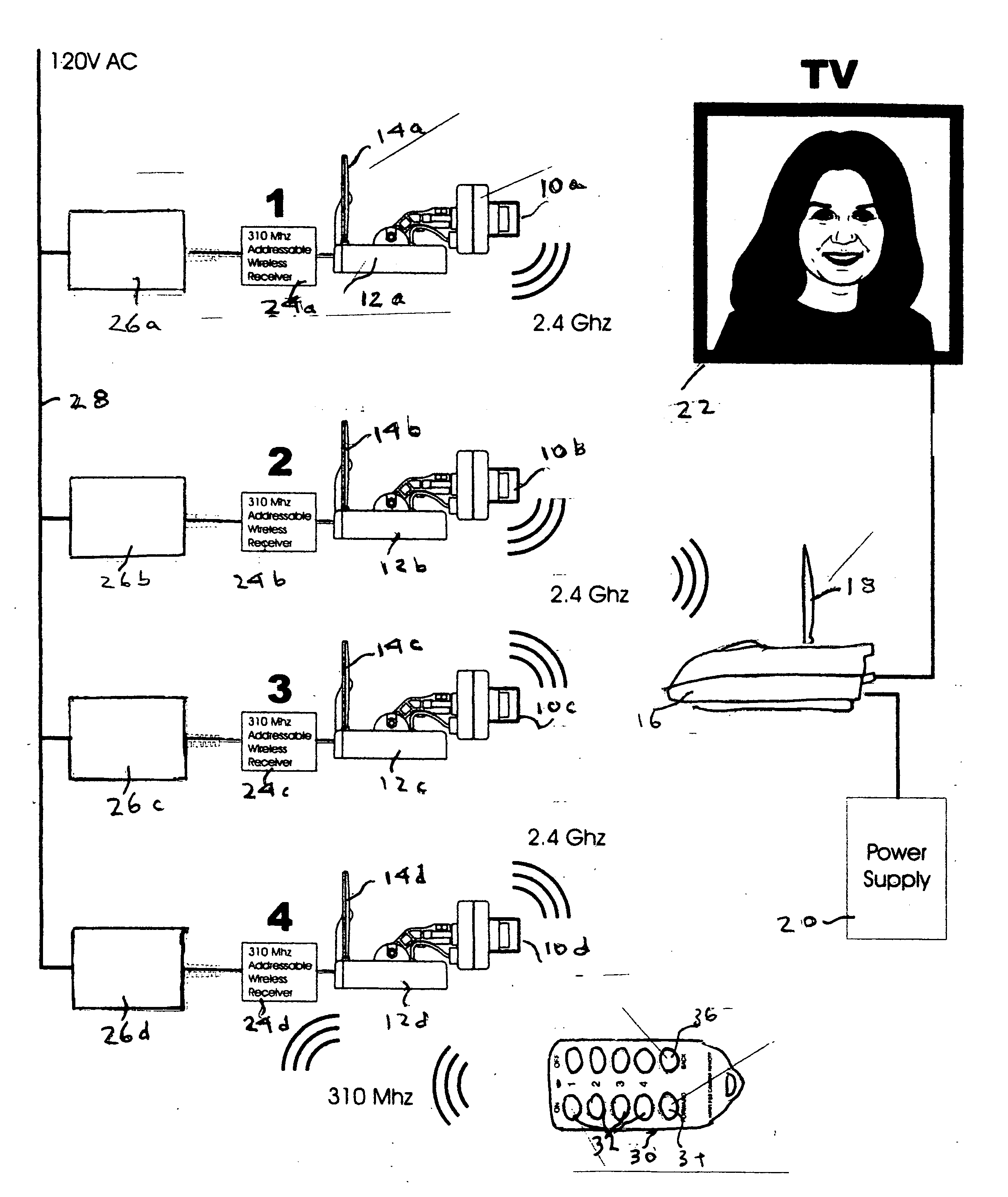Wireless multi-camera surveillance system
a multi-camera, wireless technology, applied in the field of surveillance systems, can solve the problems of inability to use, low cost, and inability to meet the needs of home owners, and achieve the effects of limiting the acceptance and use of home owners, and affecting the use of the system
- Summary
- Abstract
- Description
- Claims
- Application Information
AI Technical Summary
Benefits of technology
Problems solved by technology
Method used
Image
Examples
Embodiment Construction
[0020] As illustrated in FIG. 1, a group of television or video cameras 10a-10d, here shown for purposes of example only as being four in number, are positioned at various selected, spaced locations in and around a home. One of the cameras 10 may be situated, for example, in a baby's room and another by a pool. Each camera 10 is preferably a miniaturized color video camera that preferably can be manually or mechanically moved through an arcuate path to enable it to scan over a relatively large area.
[0021] The video signal produced by each camera, when it is turned on in the manner described in greater detail in a later part of this specification, is applied to its associated 2.4 GHz wireless video sender 12a-12d to which is also respectively connected a 2.4 GHz patch antenna 14a-14d. The video sender 12 to which the then on video camera is connected transmits a video rf signal from its patch antenna at a typical frequency of 2.4 GHz to a 2.4 GHz video rf receiver 16, which receives...
PUM
 Login to View More
Login to View More Abstract
Description
Claims
Application Information
 Login to View More
Login to View More - R&D
- Intellectual Property
- Life Sciences
- Materials
- Tech Scout
- Unparalleled Data Quality
- Higher Quality Content
- 60% Fewer Hallucinations
Browse by: Latest US Patents, China's latest patents, Technical Efficacy Thesaurus, Application Domain, Technology Topic, Popular Technical Reports.
© 2025 PatSnap. All rights reserved.Legal|Privacy policy|Modern Slavery Act Transparency Statement|Sitemap|About US| Contact US: help@patsnap.com



